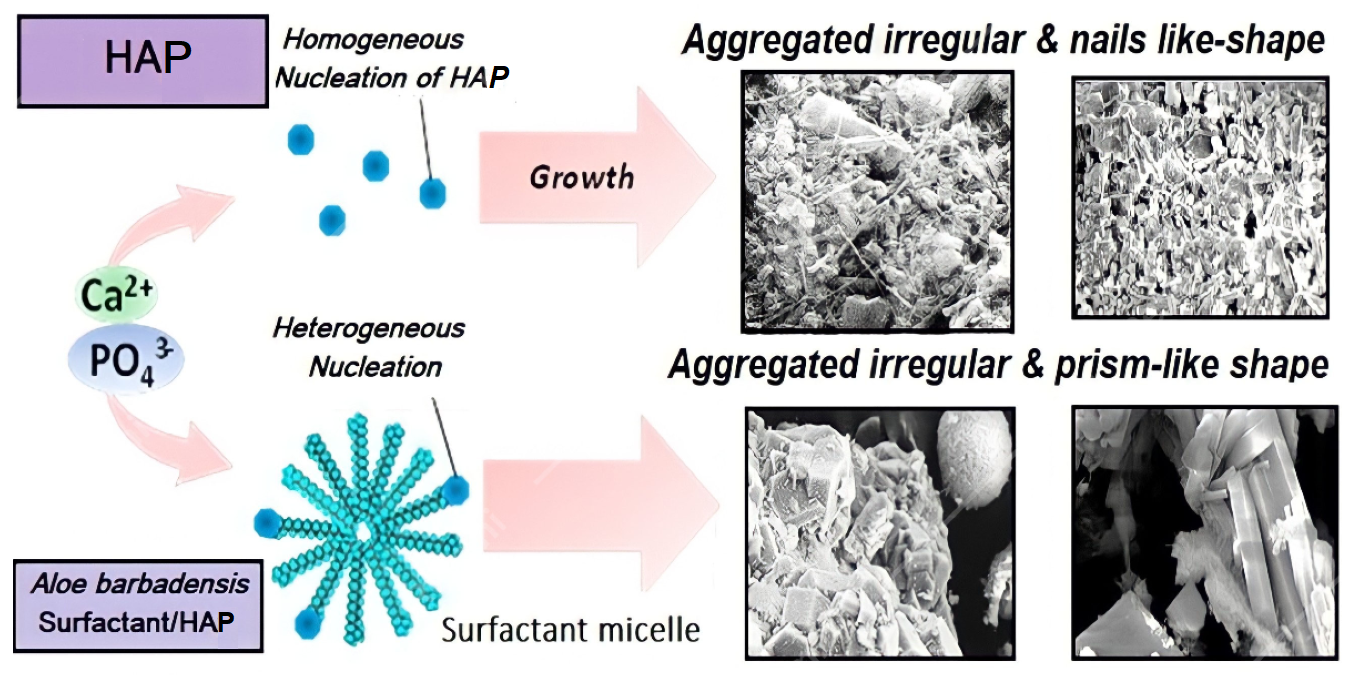 Open Access
Open Access
ARTICLE
Agro-Industrial Waste as a Source of Raw Material: Eggshell and Ash of Agave salmiana Useful for the Synthesis of Hydroxyapatite
1 Universidad Autónoma de Nuevo León, Facultad de Ciencias Físico Matemáticas, Ciudad Universitaria, San Nicolás de los Garza, Nuevo León, México
2 Universidad Autónoma de Nuevo León, Facultad de Arquitectura, Ciudad Universitaria, San Nicolás de los Garza, Nuevo León, México
3 Universidad Autónoma de Nuevo León, Facultad de Ingeniería Mecánica y Eléctrica, Ciudad Universitaria, San Nicolás de los Garza, Nuevo León, México
4 Centro de Física Aplicada y Tecnología Avanzada, Universidad Nacional Autónoma de México, Querétaro, México
* Corresponding Authors: Nora Elizondo-Villarreal. Email: ; Victor M. Castaño-Meneses. Email:
Journal of Renewable Materials 2022, 10(12), 3559-3572. https://doi.org/10.32604/jrm.2022.021945
Received 14 February 2022; Accepted 24 March 2022; Issue published 14 July 2022
Abstract
Agave salmiana ash and poultry eggshell powder as CaO sources were used for obtaining nanostructured hydroxyapatite (HAP). The synthesis was carried out by the Green Chemistry Hydrothermal Biosynthesis at 180°C with a pH of 5, by reacting CaO from Agave Salmiana ash and Eggshell powder, with dibasic calcium phosphate (CaHPO4•2H2O) in an aqueous solution, with Aloe barbadensis extract. The product was characterized by X-ray diffraction, Fourier-transform infrared spectroscopy (FT-IR), Scanning Electron Microscopy (SEM), and Transmission Electron Microscopy (TEM). The size and shape of the hydroxyapatite particles changed dramatically in the presence of Aloe barbadensis. Large crystals of Hydroxyapatite were observed when Eggshell powder and Agave salmiana ash were used as raw materials in the presence of the Aloe barbadensis surfactant. Crystals with shapes of ribbons and plates from 1 micrometers to 8 micrometers were observed when using the eggshell powder in the presence of Aloe barbadensis and, in the case of Agave salmiana ash in the presence of Aloe barbadensis, crystals with shapes of quadrangular prisms and hexagonal (polyhedra) with sizes from 2 micrometers to 20 micrometers were observed. Hydroxyapatite was therefore successfully biosynthesized by a green and sustainable method that reduces the environmental impact.
Graphic Abstract

Keywords
Cite This Article
 Copyright © 2022 The Author(s). Published by Tech Science Press.
Copyright © 2022 The Author(s). Published by Tech Science Press.This work is licensed under a Creative Commons Attribution 4.0 International License , which permits unrestricted use, distribution, and reproduction in any medium, provided the original work is properly cited.


 Submit a Paper
Submit a Paper Propose a Special lssue
Propose a Special lssue View Full Text
View Full Text Download PDF
Download PDF Downloads
Downloads
 Citation Tools
Citation Tools